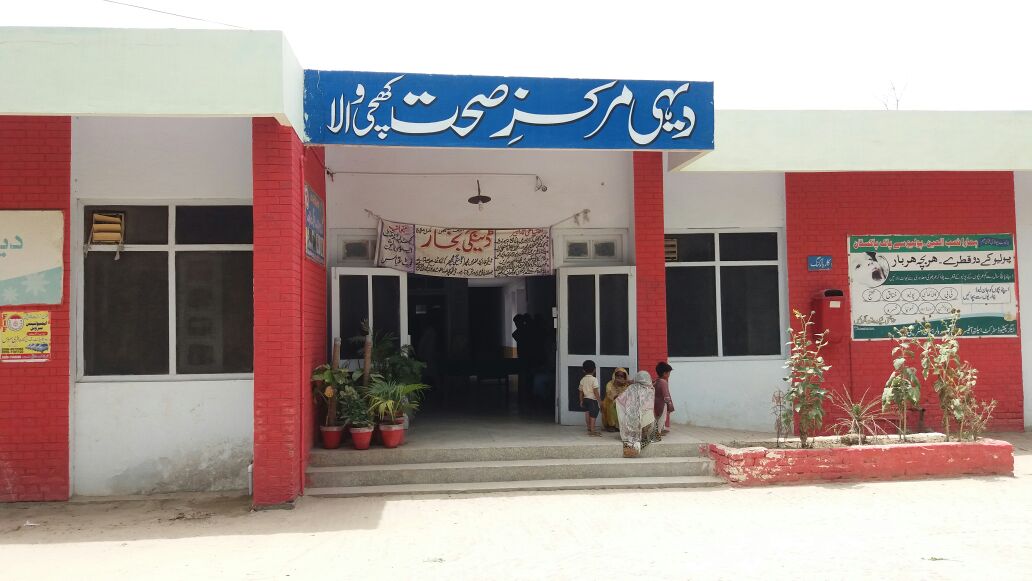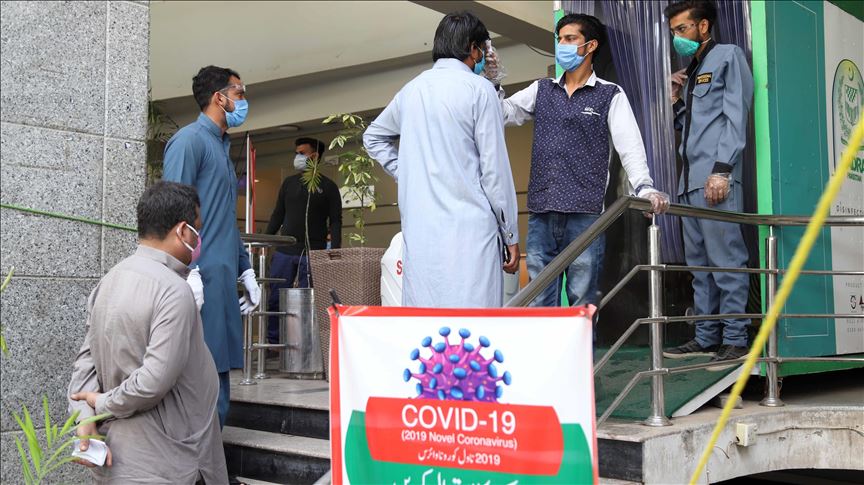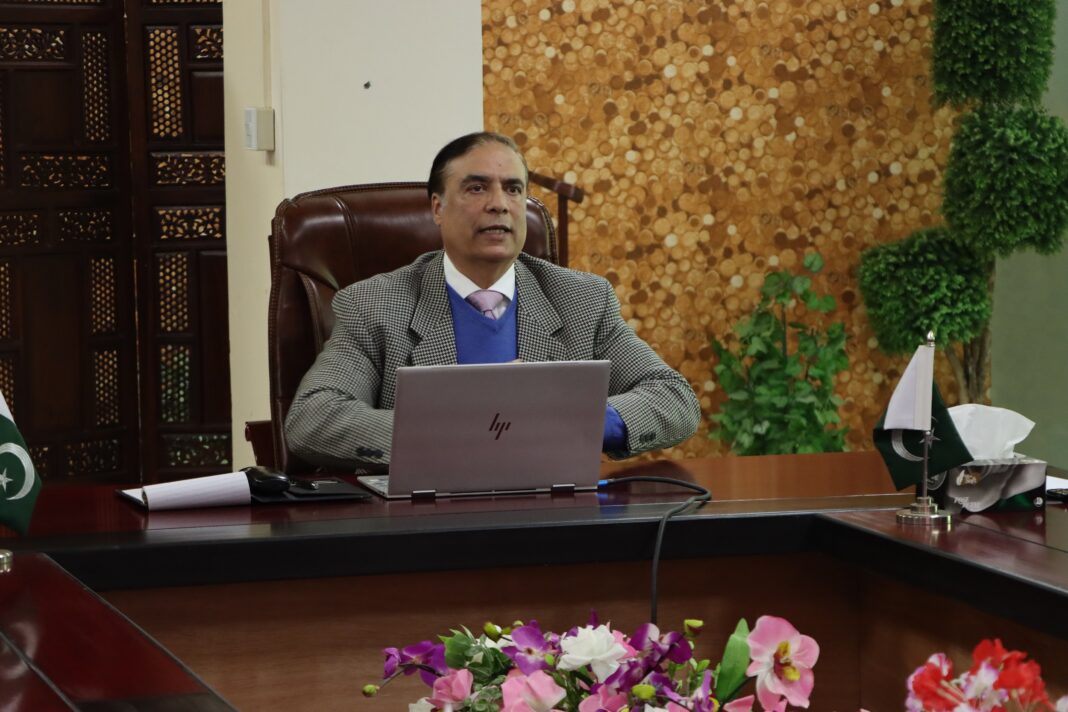For this edition of Scientia, themed “Climate Change Impact on Healthcare,” we had the privilege of speaking with Dr. Quaid Saeed, a public health specialist from Pakistan. Dr. Saeed has worked on the frontlines of emergencies and humanitarian crises, served as a National Program Officer for the World Health Organization (WHO) in Pakistan for over 12 years, and managed Global Fund Grants to combat infectious diseases.
Below is our insightful conversation with Dr. Saeed with our team member Maham Maqsood, where he shares his expertise on climate-related health challenges, disease transmission, and the importance of global cooperation in building resilient healthcare systems.

Maham: You have extensive experience dealing with emergencies and humanitarian crises and bring a broad range of managerial, analytical, and leadership skills to different national and provincial health projects. Would you like to share one of these prominent projects you are proud of?
Dr Saeed: Throughout my career, I have worked extensively in emergency and humanitarian response, particularly in Pakistan, where I was involved in several major health crises. My experience spans from working with the World Health Organization (WHO) after 9/11, closely collaborating with Khyber Pakhtunkhwa (KP) health authorities, to responding to natural disasters and disease outbreaks.
One of the most challenging and impactful experiences of my career was responding to the devastating 2005 earthquake in Pakistan. At the time, I was part of WHO’s emergency response team, working at the emergency cell in the Pakistan Institute of Medical Sciences (PIMS). The earthquake struck on October 8th, and relief efforts began the following day. By the third day, I was deployed to Battagram and later moved to Mansehra, where I remained for the next two months.
The scale of devastation was overwhelming. Casualties were high, and health services were stretched to their limits. Aftershocks, some reaching a magnitude of 6.0 on the Richter scale, continued for weeks, further destabilizing an already fragile situation. At the WHO office in Mansehra, safety concerns mounted as cracks appeared in buildings. Within ten days, we resorted to sleeping in tents to mitigate the risk of collapsing structures.
Despite the immense destruction, emergency health services in Mansehra and across KP continued relentlessly. Evacuations were facilitated by American helicopters, and international aid poured in. Medical teams from Cuba, Turkey, and various other countries arrived to support relief efforts. I worked alongside them in field hospitals in Mansehra and Battagram, managing complex injuries, including spinal trauma and amputations. Psychological distress was widespread, as many had lost loved ones. International experts provided much-needed mental health support, while maternal and child health issues, respiratory infections, and other emerging diseases posed additional challenges, worsened by the extreme cold.
Following my fieldwork, I continued coordinating efforts from Islamabad for the next six to eight months, ensuring sustained healthcare services and support.
Beyond the earthquake response, my time at WHO also involved tackling disease outbreaks. I witnessed and worked on the dengue outbreak, as well as an outbreak of cutaneous leishmaniasis along the Peshawar-Afghanistan border. The latter was introduced by Afghan refugees, as the parasite had been endemic in Afghanistan for centuries. When refugees migrated, the parasite found a suitable vector in Pakistan, leading to widespread infections, particularly in Kurram district. WHO played a crucial role in importing medications, training local doctors, and developing treatment protocols.
Additionally, I was part of WHO’s response to the 2008 HIV outbreak in Gujarat and later in Larkana. These outbreaks reinforced the need for strengthened disease surveillance, infection control, and public health interventions.
My experiences in emergency response have been both professionally and personally transformative, and each crisis has been a learning opportunity.
Maham: Could you share your experience in public health, particularly your work on infectious diseases and pandemic preparedness? What are the challenges that hinder Pakistan’s healthcare system from providing the best health practices?
Dr Saeed: Pakistan’s healthcare system is structured across four tiers: Basic Health Units (BHUs), Rural Health Centers (RHCs), Tehsil Hospitals, and District Hospitals, with teaching hospitals serving as the final referral point. The foundation of this system was laid in the 1980s to provide basic healthcare services at the community level. Basic Health Units and Community Welfare Centers were designed to cater to populations of approximately 10,000. Meanwhile, RHCs, serving around 40,000 people, were equipped with small laboratories and served as the next level of care. Patients requiring further treatment were referred to Tehsil Hospitals, then to District Hospitals, and, if necessary, to teaching hospitals.

Although this model was well-conceived, it has struggled with fragmentation and inefficiency, particularly at the primary healthcare level. Many small communities bypass BHUs and RHCs, leading to overcrowding at District Hospitals, which strains resources and limits access to timely care.
During disease outbreaks, a robust public health system must ensure early detection, containment, and response to infectious disease outbreaks. The World Health Organization (WHO) has developed a trend-monitoring model that enables healthcare professionals to track disease incidence, detect emerging outbreaks, and intervene before widespread transmission occurs. A key indicator in epidemiology is the doubling of incidence, which signals the potential for an outbreak.
For effective containment, early isolation of suspected cases is essential. In Pakistan, this can only be achieved if BHUs and RHCs function efficiently. Infectious disease management requires a multifaceted strategy:
- Early Detection: Identifying cases as soon as possible through functional surveillance systems and diagnostic testing.
- Containment: Isolating affected individuals, implementing quarantine measures, and minimizing community transmission.
- Response and Recovery: Treating infected individuals, protecting healthcare workers, and ensuring continued healthcare delivery.
As you might have witnessed during the COVID-19 pandemic, healthcare workers were prioritized for vaccination to safeguard their ability to provide care. Widespread vaccination efforts ultimately contributed to herd immunity, slowing transmission. However, Pakistan’s early detection infrastructure remains inadequate, with limited diagnostic capacity in public hospitals and a lack of functional laboratories at the district level. While there is the NIH Reference Lab in Islamabad, its provincial branches are not effectively operational. As a result, outbreaks are often detected only after media reports, by which time containment becomes significantly more challenging.
Pakistan’s experience with COVID-19 highlights the need for stronger outbreak preparedness. The virus initially spread when infected travelers returned from Wuhan via government-facilitated repatriation flights. In the early days, there was no systematic diagnostic or quarantine infrastructure to contain the spread.
To prevent future outbreaks, key measures must be implemented. Essential medical supplies should be stockpiled, including laboratory reagents and personal protective equipment (PPE). Laboratory networks should be strengthened, ensuring district-level diagnostic capacity for early pathogen detection.There should be proper training of the healthcare staff in outbreak management and patient care protocols. Moreover, public health surveillance must be improved to identify transmission patterns and respond proactively.
In short, a comprehensive preparedness, response, and recovery framework is critical to mitigating future pandemics and strengthening Pakistan’s healthcare system against emerging infectious diseases.
Maham: How do you see the intersection between climate change and public healthcare challenges? How has climate change contributed to the spread of infectious diseases malaria, dengue, Hepatitis, and zoonotic diseases?
Dr Saeed: Climate change is a critical issue that significantly influences the spread of infectious diseases. Normally, animals and birds don’t transmit viruses to humans, and vice versa, but environmental changes can disrupt this balance. Climate shifts can enable viruses to evolve and cross species barriers: a process that has led to diseases like HIV/AIDS, which originated when humans consumed raw monkey meat in Africa, allowing the virus to jump to humans and spread through sexual transmission.
Increased human-wildlife interaction also raises the risk of zoonotic spillover events. Densely populated regions, like parts of South Asia, are particularly vulnerable to rapid transmission. For example, influenza outbreaks often originate in China, where WHO monitors viral trends to predict and develop flu vaccines a year in advance to mitigate global spread.
In Pakistan, climate change has contributed to the rise of diseases like dengue. Over the past decade, unpredictable rains and flooding have created pockets of stagnant water, which are ideal breeding grounds for Aedes mosquitoes, which thrive in clean, freshwater environments. Rainwater collected in household containers, plant pots, and other reservoirs increased mosquito populations, leading to severe outbreaks. In Lahore, for instance, an unusually heavy monsoon season triggered a major dengue epidemic, with record-breaking cases the following year.
Rising temperatures and changing rainfall patterns have also driven the emergence of diseases like Zika and Chikungunya. Additionally, diseases like malaria and leishmaniasis spread through vectors like sandflies, which were introduced to refugee camps but found suitable conditions to persist and spread across KP, Balochistan, and Sindh, making these diseases endemic in certain areas.
So, climate change acts as a force multiplier for infectious disease transmission, intensifying existing public health challenges. This emphasizes the urgent need for climate-resilient healthcare systems and proactive disease surveillance.

Maham: How important is global cooperation, such as between governments and organizations like WHO, in tackling climate-related healthcare issues? What steps should be prioritized globally and locally to mitigate the healthcare impact of climate change?
Dr Saeed: Global cooperation is crucial for managing healthcare issues influenced by climate change, especially for vector-borne diseases whose spread is influenced by shifting habitats. Climate change is expanding the range of vectors like mosquitoes and sandflies, increasing the risk of outbreaks in new regions. In an interconnected world with extensive human travel, infections can quickly spread across continents, as we saw during the COVID-19 pandemic.
After COVID-19, the Global Health Security Agenda was reinforced, emphasizing stronger health systems, early detection, and rapid response to contain outbreaks. Critical amendments were made to the International Health Regulations (IHR), signed by 194 member states, creating a framework for global collaboration. This includes establishing detection labs, sharing real-time data with WHO, and coordinating a unified response to emerging threats.
When a new virus emerges, countries must work together across multiple fronts ranging from accelerating immunization efforts to implementing containment strategies. Climate change is a global crisis, and its impact on public health is a shared burden. By improving international collaboration, investing in surveillance systems, and strengthening local healthcare infrastructure, we can build a more resilient global health system capable of preventing future pandemics.
Maham: With your extensive experience managing Global Fund Grants at the national level, could you outline the process for startups and community-based organizations to access these funding opportunities?
Dr Saeed: The Global Fund supports the fight against AIDS, tuberculosis, and malaria across countries with the ‘highest disease burden and lowest economic capacity.’ The funding model works through a structured system of Principal Recipients (PRs), which are often ministries of health or large private-sector entities, who oversee fund distribution over a three-year cycle. These funds are gradually allocated to Sub-Recipients (SRs) and Sub-Sub-Recipients (SSRs), which are typically community-based organizations (CBOs) or NGOs working at the grassroots level.
During my time with the Global Fund, I worked with the Common Management Unit (CMU), which handled national-level eradication efforts for AIDS and TB. The selection of recipients is very rigorous. Funding calls are publicly advertised, and NGOs apply with detailed profiles showcasing their strengths, experience, community reach, and capacity to implement impactful programs. The selection process is competitive, and only organizations with a clear track record and community-trained teams are awarded grants.
For startups, the key to accessing these opportunities lies in building a robust program with a well-documented impact on the target community. It’s essential to demonstrate expertise in health interventions, case detection, treatment provision, and prevention measures. For example, community-led organizations, such as those run by transgender advocates for HIV prevention and care, receive funding because they have direct access to underserved populations and understand local challenges that might escape larger institutions.
The Global Fund prioritizes organizations that can deliver tangible results on the ground, bridge gaps in healthcare, and help stop disease transmission.
Also read: Venturing into the 60s and the current status of space research in Pakistan with Dr. Tariq Mustafa

Maham Maqsood is a science communicator and co-founder at Scientia Pakistan. She is currently doing Masters in Biochemistry at the Middle East Technical University, Turkey. She has over five years of experience in science communication and outreach, collaborating with researchers, educators, and communicators to develop effective strategies and content for various platforms and events.

